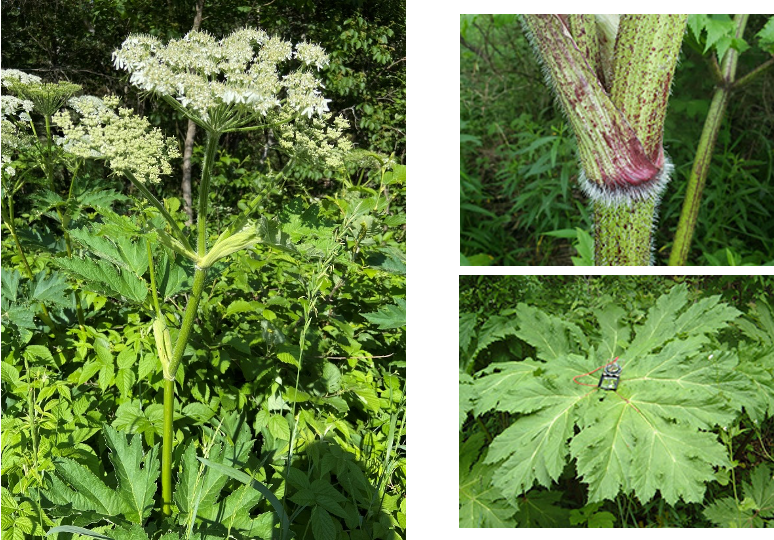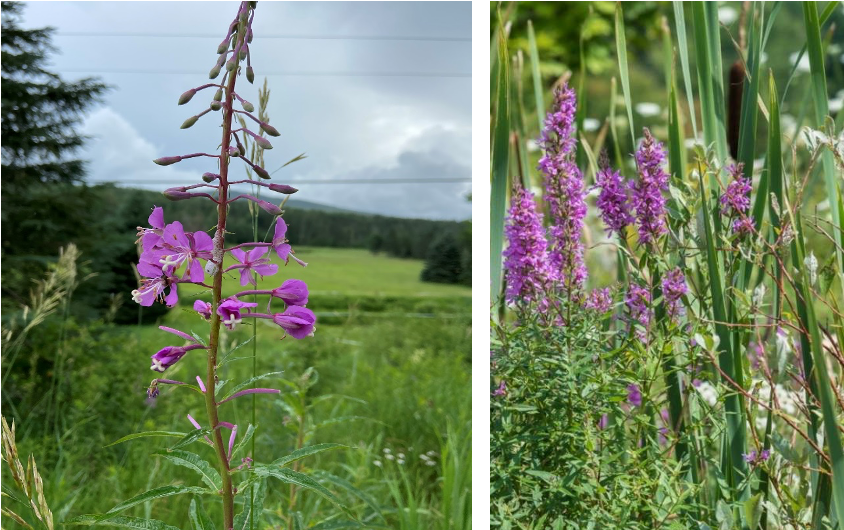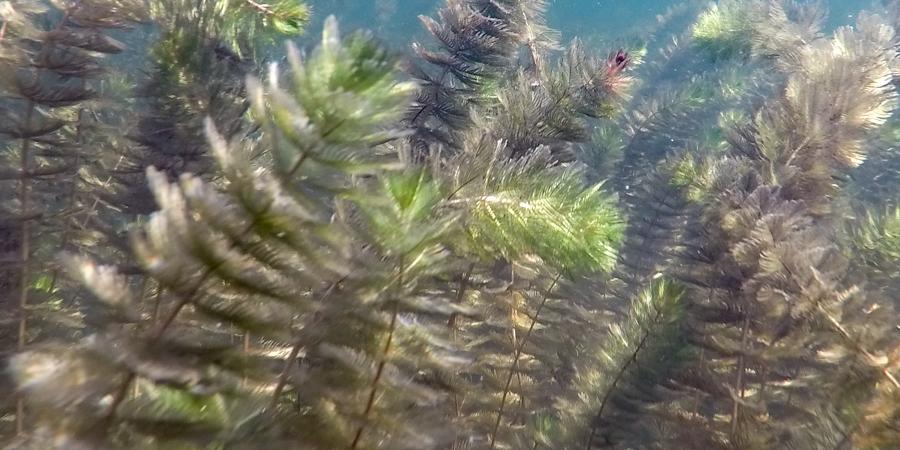It's summer in the Ausable River watershed. The mud and the blackflies of the spring are gone, making room for gorgeous summer weather and blue skies. All that sun and warmth means terrestrial and aquatic plants can reach the peak of their blooming cycle. It is also the point in the season when invasive species become most obvious. In response, a large push for identification and removal helps native species to thrive. Surveying for invasive species is something anyone can do, and we strongly encourage it. To assist with identification, below is a list of invasive species and their native look-alikes to help you in your own invasive species surveying.
Elodea canadensis (American Waterweed) and Hydrilla

A comparison between the native American waterweed, invasive Hydrilla, and Brazilian elodea (2).
Hydrilla is a quickly spreading aquatic invasive species that can severely disrupt aquatic ecosystems (1). Because of this, it is important to be able to identify it. But how can we be sure that we are looking at Hydrilla? American elodea, or waterweed, looks very similar to Hydrilla and is common in Adirondack waters. There are two key differences in appearance that allow us to distinguish between the two. Both species have leaves that grow in whorls, however American elodea has three leaves per whorl, while Hydrilla has four to eight leaves per whorl (2). In plants, whorling refers to how leaves radiate around a stem from a single spot. This can be seen in the diagram above. Hydrilla's leaves are also noticeably toothed, while American elodea's leaves appear smooth. Hydrilla is not the only invasive that looks like waterweed. Brazilian elodea is another species that looks remarkably similar to both Hydrilla and American elodea, however it has whorled leaves in pairs of four to six (2).
Cow Parsnip and Giant Hogweed

Cow parsnip on the left, Notice the green stem. Giant hogweeds purple stem and large leaves on the right (3)
On a drive through the watershed, you may notice a five to eight-foot-tall plant with white flowers and large leaves. Successful initiatives in the past years have brought giant hogweed into the forefront of the public mind and this plant may look remarkably similar to the photos you have seen. The tall, native cow parsnip can be found around the watershed, and shares many characteristics with giant hogweed, so how can we be sure if we are looking at the native cow parsnip or invasive giant hogweed? Get closer, but not too close! Like giant hogweed, cow parsnip is also phototoxic, meaning its sap can produce burns, so proceed with caution around it (3). The main difference between the two species is their stems. Cow parsnip will have no, or very few, purple blotches on its stem, while giant hogweed stems have many purple markings present on its stem (3). Giant hogweed also has much larger stems than cow parsnip, measuring around two to four inches in diameter compared to one to two inches for cow parsnip (3). Cow parsnip blooms in May to late June, which is earlier in the season than giant hogweed, so be sure to keep time of year in mind. (3) For more information regarding the differences between the two plants, and other look-alikes visit the DEC Page for giant hogweed identification.
Fireweed and Purple Loosestrife

Fireweed on the left and Purple Loosestrife on the right (4)
Purple loosestrife is an invasive species present in the Ausable River watershed. We survey for and remove purple loosestrife due to its ability to take over wetlands and choke out native species (4). The Ausable River watershed is also home to native species that are commonly mistaken for purple loosestrife. One of these species is fireweed. Similar to purple loosestrife, fireweed has pink and purple flowers that grow in a spiked form; however, its flowers have four petals (5). Purple loosestrife, on the other hand, has flowers with five to seven petals on each flower (6). The stems of the two plants are also different. While purple loosestrife has a square shaped stem (6), fireweed's stem is circular. If you find purple loosestrife, you can easily remove it by digging up the plants and the roots and placing them in a trash bag that can be left out in the sun for two days. This solarizing ensures the plant is dead.
If you see something that looks invasive to you, there are multiple references you can use for positive identification. DEC's website, reporting it on iMapInvasives, or emailing our River Steward at riversteward@ ausableriver.org.
Sign-up for our e-newsletter to get weekly updates on the latest stories from the Ausable River Association.
References:
Text Sourcing:
http://adkinvasives.com/Invasive-Species/Detail/18 (1)
https://www.niipp.net/hydrilla/how-can-i-help (2)
https://www.dec.ny.gov/animals/72766.html (3)
http://nyis.info/invasive_species/purple-loosestrife/ (4)
https://plants.usda.gov/plantguide/pdf/pg_chan9.pdf (5)
http://adkinvasives.com/Invasive-Species/Detail/64 (6)
Photo Sourcing:
Hydrilla photo: https://www.niipp.net/hydrilla/how-can-i-help (2)
Purple Loosestrife photo: AsRA
Giant Hogweed Photos: https://www.dec.ny.gov/animals/72766.html (3)



